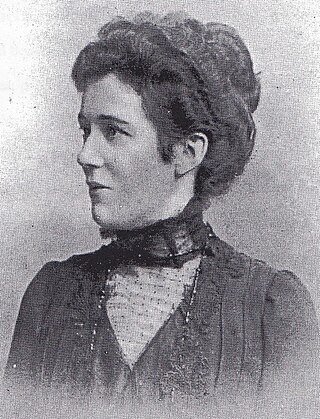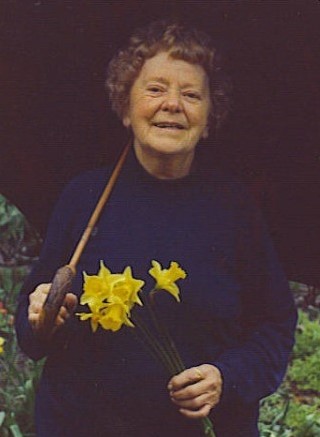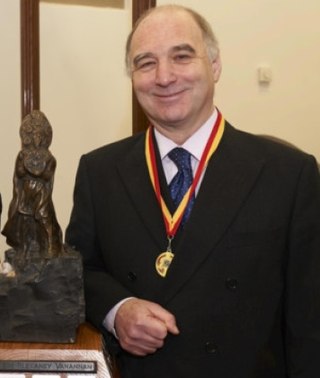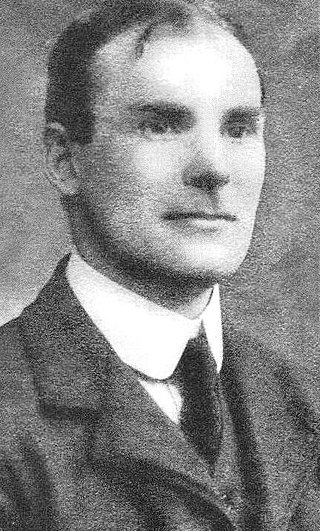
Yn Chruinnaght (Manx for "the gathering") [1] is a cultural festival in the Isle of Man which celebrates Manx music, Manx language and culture, and links with other Celtic cultures.

Yn Chruinnaght (Manx for "the gathering") [1] is a cultural festival in the Isle of Man which celebrates Manx music, Manx language and culture, and links with other Celtic cultures.
The forerunner of Yn Chruinnaght was founded in 1924, and was known as Cruinnaght Vanninagh Ashoonagh ("Manx national gathering"). It was the idea of William Cubbon, the second Director of the Manx Museum, who was also the Honorary Treasurer of both Yn Çheshaght Ghailckagh (The Manx Gaelic Society) and the World Manx Association (WMA).
Programmes from the early festivals state that "Yn Cruinnaght Vanninagh Ashoonagh is held under the auspices of The World Manx Association and The Manx [Gaelic] Society in commemoration of our great National Poet and with the object of preserving national sentiment." The "great National Poet" referred to is Thomas Edward Brown (1830–1897) whose poems, including lengthy verse-stories in Manx dialect (of English, though with some Gaelic words), were published by Macmillan.
The Cruinnaght Vanninagh Ashoonagh was organised by William Cubbon through the WMA's Ellan Vannin magazine, which he edited. The festival was a one-day, competitive event held at Hollantide (Allhallowtide), with participants from the island (though at least one of the judges, Dr J E Lyon, came from "across", i.e. from outside the island). Members of the various sub-committees included Archibald Knox, J J Kneen and Mona Douglas. The event included singing (including in the Manx Gaelic language), music (including a grand concert as a finale), arts, crafts and cookery. The festival came to an end with the outbreak of the Second World War.
It was the aim of one of the leading figures in Manx traditional cultural affairs, Mona Douglas, to revive Yn Chruinnaght as a Manx national festival. A cultural revival starting in the late 1960s led to renewed vigour in the Manx language, in Manx traditional music, and particularly in Manx dancing. Mona recognised that Yn Chruinnaght could provide a focus for cultural activities and a way to give greater recognition to Manx traditional culture, particularly in the wider context of an inter-Celtic festival.
In 1977, Mona Douglas organised Feailley Vanninagh Rhumsaa (the "Ramsey Manx Festival") which was held on 1 September in collaboration with the Ellynyn ny Gael (Arts of the Gaels) organization. The programme's front cover bore the modern symbol of Yn Chruinnaght. The programme announced that the festival "will be revived in Ramsey August–September 1978, and this time it will be a five-day Inter-Celtic Festival". It was held on 21–25 August 1978. Mona Douglas's programme note in 1979 states that "It was decided to stage Yn Chruinnaght in Ramsey, the only town in the Island which had no important festival of its own, and which, like Peel, was a recognized centre of the national revival."
Whereas Cruinnaght Vanninagh Ashoonagh had been a festival only of Manx culture, Mona Douglas conceived Yn Chruinnaght in its modern form as an inter-Celtic festival, giving an opportunity for the six Celtic nations of the Isle of Man, Brittany, Ireland, Scotland, Wales and Cornwall to participate. Mona Douglas was particularly pleased to receive official recognition for Yn Chruinnaght from Oireachtas na Gaeilge in Ireland, Gorsedd y Beirdd and Yr Eisteddfod Genedlaethol in Wales and Am Mòd in Scotland.
Events have been held throughout the island as part of Yn Chruinnaght, but the main focus from 1978 to 2006 was the town of Ramsey. The relationship of Yn Chruinnaght with Ramsey has been an important factor over the years. The festival enjoyed venues and facilities throughout the town, including a variety of hotels and the Town Hall, various churches and even the livestock mart. As many of these venues and facilities ceased to be available, a marquee became a feature of the festival. However, with the usual plot in Ramsey for a marquee no longer available in 2007, Yn Chruinnaght had to reconsider its siting. In 2007, the main focus moved to the Centenary Centre in Peel.
The development of traditional arts in the Isle of Man has continued apace since the late 1960s. Mona Douglas recognised that the energy associated with it could be harnessed to revive Yn Chruinnaght. Further development would undoubtedly have taken place in its own way. However, Yn Chruinnaght has provided a focus for thinking about and arranging traditional music, and has been the spur for new creative work drawing on traditional themes.
Cooish, another festival organised by Yn Çheshaght Ghailckagh.

Literature in the Manx language, which shares common roots with the Gaelic literature and Pre-Christian mythology of Ireland and Scotland, is known from at least the early 16th century, when the majority of the population still belonged to the Catholic Church in the Isle of Man.

Sophia Morrison was a Manx cultural activist, folklore collector and author. Through her own work and role in encouraging and enthusing others, she is considered to be one of the key figures of the Manx cultural revival. She is best remembered today for writing Manx Fairy Tales, published in 1911, although her greatest influence was as an activist for the revitalisation of Manx culture, particularly through her work with the Manx Language Society and its journal, Mannin, which she edited from 1913 until her death.

The Cooish is the name of a festival that promotes Manx language and culture that takes place on the Isle of Man each November. The word 'Cooish' is a Manx word that has many meanings. It can translate to mean a chat, a meeting, a cause, an issue, or a get-together.

Thomas Brian Stowell, also known as Brian Mac Stoyll, was a Manx radio personality, linguist, physicist, and author. He was formerly Yn Lhaihder to the Parliament of the Isle of Man, Tynwald. He is considered one of the primary people behind the revival of the Manx language.
John Joseph Kneen was a Manx linguist and scholar renowned for his seminal works on Manx grammar and on the place names and personal names of the Isle of Man. He is also a significant Manx dialect playwright and translator of Manx poetry. He is commonly best known for his translation of the Manx National Anthem into Manx.

Mona Douglas was a Manx cultural activist, folklorist, poet, novelist and journalist. She is recognised as the main driving force behind the modern revival of Manx culture and is acknowledged as the most influential Manx poet of the 20th century, but she is best known for her often controversial work to preserve and revive traditional Manx folk music and dance. She was involved in a great number of initiatives to revive interest and activity in Manx culture, including societies, classes, publications and youth groups. The most notable and successful of these was Yn Chruinnaght.

Robert Corteen Carswell RBV is a Manx language and culture activist, writer and radio presenter. In 2013 he received the Manx Heritage Foundation's Reih Bleeaney Vanannan award for outstanding contributions to Manx culture.
Mannin: Journal of Matters Past and Present relating to Mann was an academic journal for the promotion of Manx culture, published biannually between 1913 and 1917 by the Manx Society, Yn Cheshaght Ghailckagh. It was edited by Sophia Morrison, with the assistance of William Cubbon.

William Walter Gill (1876–1963) was a Manx scholar, folklorist and poet. He is best remembered for his three volumes of A Manx Scrapbook.

The Reih Bleeaney Vanannan is the Isle of Man's most prestigious annual award for culture. It is presented by Culture Vannin to the person or group who, in the opinion of the panel of assessors, has made the most outstanding contribution to Manx culture. It is officially presented by the President of Culture Vannin, normally in January each year.
Aeglagh Vannin was a youth group in the Isle of Man whose purpose was the engagement with and revitalisation of Manx language, history and culture. It was established by Mona Douglas in 1931, went through a number of mutations, and faded out in the 1970s. It is best remembered for its central role in the revival of Manx folk dancing.
Colin Jerry was a Manx cultural activist best known for his contributions to Manx music through his books, Kiaull yn Theay, published in two volumes. He was awarded the Reih Bleeaney Vanannan in 1991 for his contributions to Manx culture which were 'extensive and staggering.'

Yn Çheshaght Ghailckagh, also known as the Manx Language Society and formerly known as Manx Gaelic Society, was founded in 1899 in the Isle of Man to promote the Manx language. The group's motto is Gyn çhengey, gyn çheer.

William Cubbon M.A. was a Manx nationalist, antiquarian, author, businessman and librarian who was the first secretary of the Manx Museum, later becoming Director of the Museum.
John Gell, also known as Jack Gell or Juan y Geill was a Manx speaker, teacher, and author who was involved with the revival of the Manx Language on the Isle of Man in the 20th century. His book Conversational Manx, A Series of Graded Lessons in Manx and English, with Phonetic Pronunciation has been used by learners of the Manx language since it was published in 1953.
Edmund Evans Greaves Goodwin was a Manx language scholar, linguist, and teacher. He is best known for his work First Lessons in Manx that he wrote to accompany the classes he taught in Peel.
Doug Fargher also known as Doolish y Karagher or Yn Breagagh, was a Manx language activist, author, and radio personality who was involved with the revival of the Manx language on the Isle of Man in the 20th century. He is best known for his English-Manx Dictionary (1979), the first modern dictionary for the Manx language. Fargher was involved in the promotion of Manx language, culture and nationalist politics throughout his life.
John William Radcliffe, more commonly known as Bill Radcliffe, or also Illiam y Radlagh, was a Manx language activist, author, and teacher who was involved with the revival of the Manx language on the Isle of Man in the 20th century. His work recording the last native speakers of the language with the Irish Folklore Commission helped to ensure that a spoken record of the Manx language survived.
Leslie Quirk, also known as Y Kione Jiarg, was a Manx language activist and teacher who was involved with the language's revival on the Isle of Man in the 20th century. His work recording the last native speakers of the language with the Irish Folklore Commission and the Manx Museum helped to ensure that a spoken record of the Manx language survived.

Shennaghys Jiu(English: Tradition Today) is a four-day youth music and performing arts festival on the Isle of Man. The festival's aim is to give young performers of traditional Manx music and dance the opportunity to come together in a non-competitive environment, and share culture with the other Celtic nations.